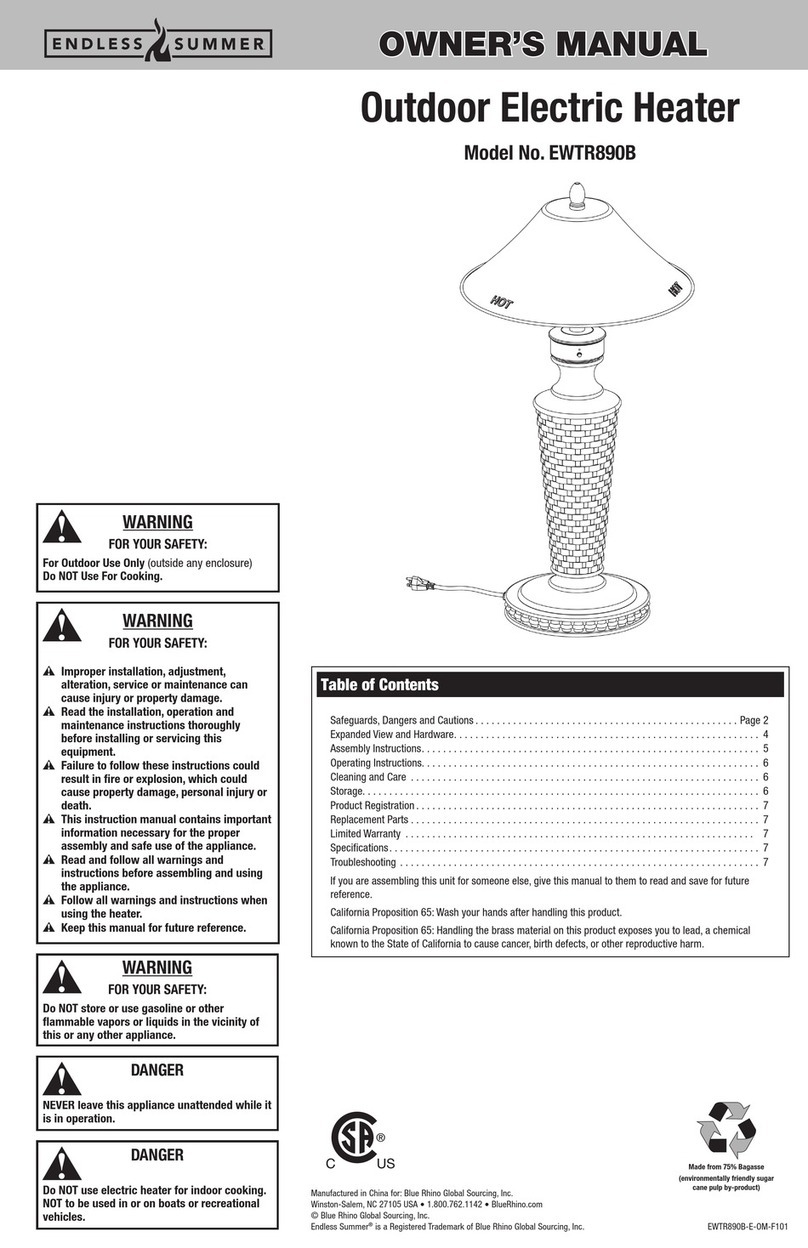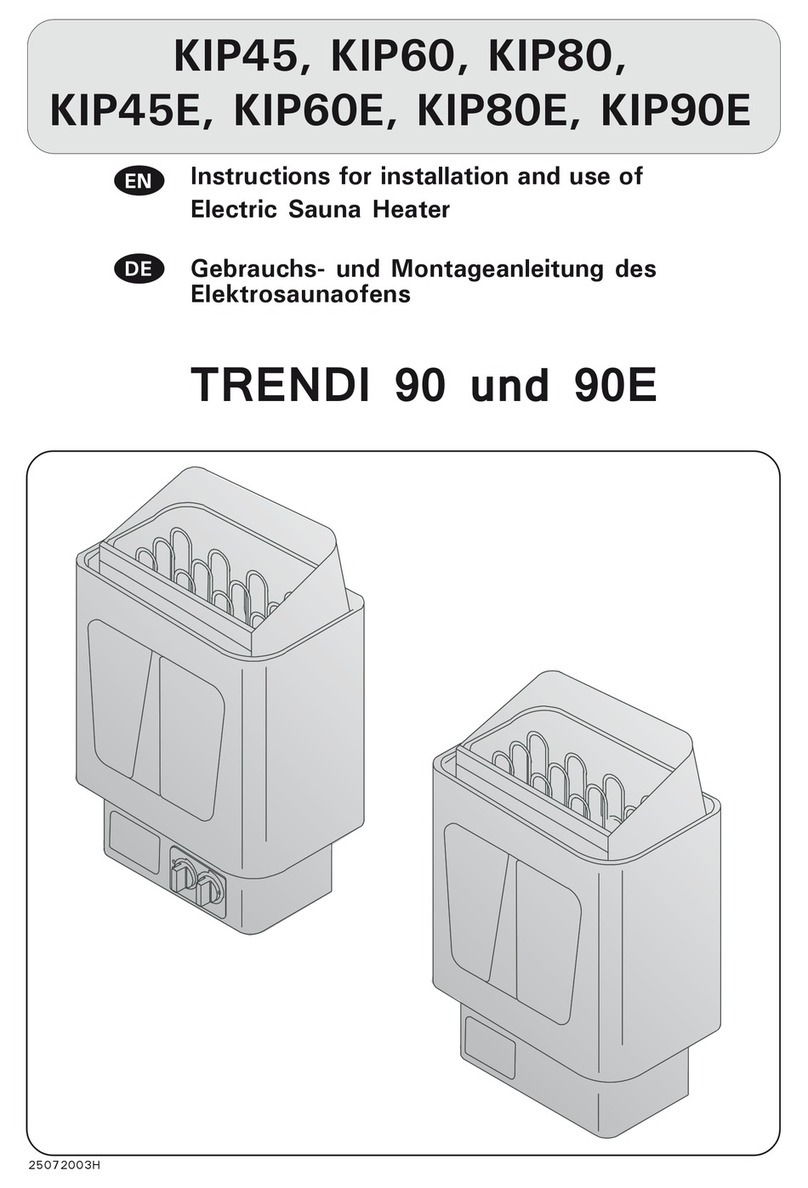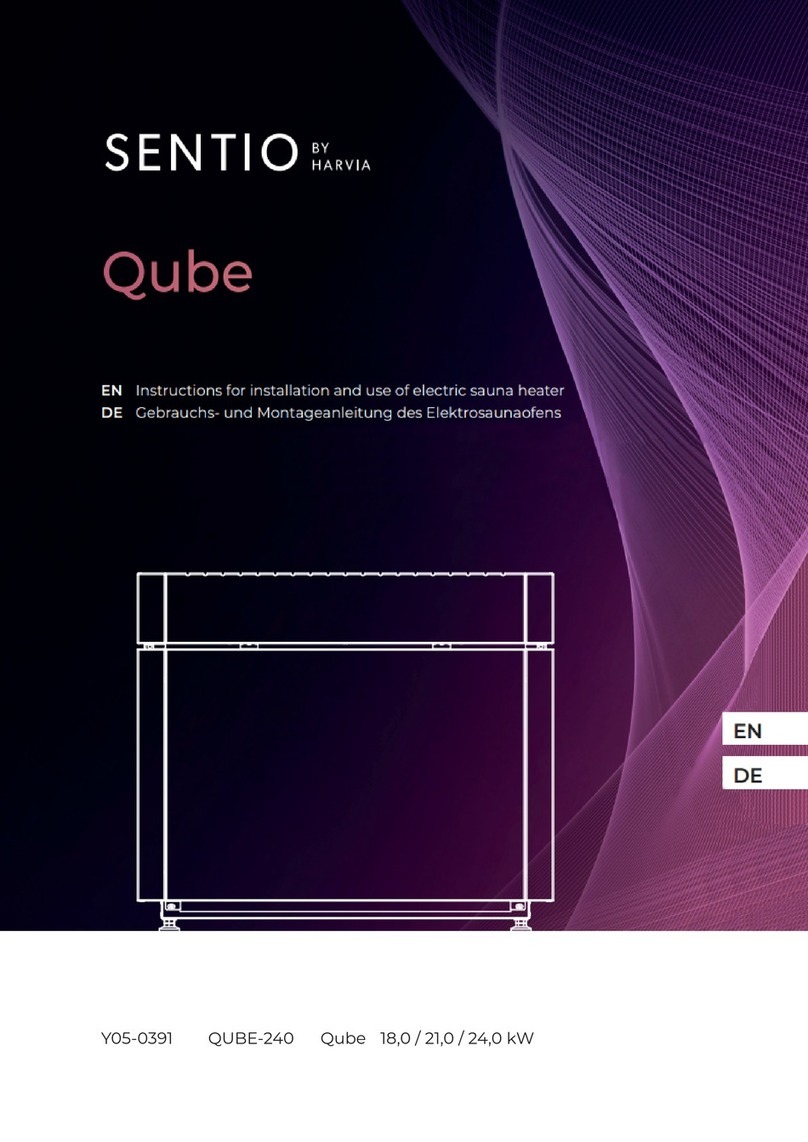Webasto Thermo 300.102 User manual

Thermo 300.102
Installation Instructions
for use with
The Detroit Diesel
Series 4000 Engine
Coolant Heater

TABLE OF CONTENTS
I
Table of Contents
1. Introduction
1.1 Scope and Purpose . . . . . . . . . . . . . . . . . . . . . . . . . . . . . . . . . . . . . . . . . . . . . . . . . . . . 1-1
1.2 Meaning of Warnings, Cautions and Notes . . . . . . . . . . . . . . . . . . . . . . . . . . . . . . . . . . 1-1
1.3 Additional Documentation to be Used . . . . . . . . . . . . . . . . . . . . . . . . . . . . . . . . . . . . . . 1-1
1.4 General Safety Regulations and Information . . . . . . . . . . . . . . . . . . . . . . . . . . . . . . . . . 1-1
1.4.1 General Safety Notes . . . . . . . . . . . . . . . . . . . . . . . . . . . . . . . . . . . . . . . . . . . 1-1
2. General Description
2.1 General Description . . . . . . . . . . . . . . . . . . . . . . . . . . . . . . . . . . . . . . . . . . . . . . . . . . . . 2-1
3. Functional Description
3.1 Switching On . . . . . . . . . . . . . . . . . . . . . . . . . . . . . . . . . . . . . . . . . . . . . . . . . . . . . . . . . 3-1
3.2 Heating Operation . . . . . . . . . . . . . . . . . . . . . . . . . . . . . . . . . . . . . . . . . . . . . . . . . . . . . 3-1
3.3 Switching Off . . . . . . . . . . . . . . . . . . . . . . . . . . . . . . . . . . . . . . . . . . . . . . . . . . . . . . . . . 3-1
3.4 Power Save . . . . . . . . . . . . . . . . . . . . . . . . . . . . . . . . . . . . . . . . . . . . . . . . . . . . . . . . . . 3-1
4. Technical Data
4.1 General Information . . . . . . . . . . . . . . . . . . . . . . . . . . . . . . . . . . . . . . . . . . . . . . . . . . . . 4-1
4.2 Thermo 300 Heater Data . . . . . . . . . . . . . . . . . . . . . . . . . . . . . . . . . . . . . . . . . . . . . . . . 4-1
4.2.1 Thermo 300.102 Heater Dimensions . . . . . . . . . . . . . . . . . . . . . . . . . . . . . . . . 4-2
4.3 U 4814 & U 4852 Coolant Pump Data . . . . . . . . . . . . . . . . . . . . . . . . . . . . . . . . . . . . . . 4-3
4.3.1 Coolant Circulation Pump U4814 Dimensions . . . . . . . . . . . . . . . . . . . . . . . . . 4-3
4.3.2 Coolant Circulation Pump U4852 Dimensions . . . . . . . . . . . . . . . . . . . . . . . . . 4-4
5. Installation
5.1 General Information . . . . . . . . . . . . . . . . . . . . . . . . . . . . . . . . . . . . . . . . . . . . . . . . . . . . 5-1
5.2 Installation Locations . . . . . . . . . . . . . . . . . . . . . . . . . . . . . . . . . . . . . . . . . . . . . . . . . . . 5-1
5.3 Mounting the Heater . . . . . . . . . . . . . . . . . . . . . . . . . . . . . . . . . . . . . . . . . . . . . . . . . . . 5-1
5.4 Mounting the Coolant Circulation Pump . . . . . . . . . . . . . . . . . . . . . . . . . . . . . . . . . . . . . 5-1
5.5 Exhaust Pipe Connection . . . . . . . . . . . . . . . . . . . . . . . . . . . . . . . . . . . . . . . . . . . . . . . 5-2
5.6 Combustion Air Supply . . . . . . . . . . . . . . . . . . . . . . . . . . . . . . . . . . . . . . . . . . . . . . . . . 5-2
5.7 Plumbing into the Coolant System . . . . . . . . . . . . . . . . . . . . . . . . . . . . . . . . . . . . . . . . . 5-3
5.7.1 General Information . . . . . . . . . . . . . . . . . . . . . . . . . . . . . . . . . . . . . . . . . . . . . 5-3
5.7.2 Supplemental Heating Schematic . . . . . . . . . . . . . . . . . . . . . . . . . . . . . . . . . . 5-4
5.7.3 Supply and Return Plumbing Connection Points . . . . . . . . . . . . . . . . . . . . . . . 5-5
5.7.4 Example of a Heater Installation . . . . . . . . . . . . . . . . . . . . . . . . . . . . . . . . . . . 5-6
5.8 Fuel System . . . . . . . . . . . . . . . . . . . . . . . . . . . . . . . . . . . . . . . . . . . . . . . . . . . . . . . . . 5-7
5.8.1 General Information . . . . . . . . . . . . . . . . . . . . . . . . . . . . . . . . . . . . . . . . . . . . . 5-7
5.8.2 Fuel Supply . . . . . . . . . . . . . . . . . . . . . . . . . . . . . . . . . . . . . . . . . . . . . . . . . . . 5-7
5.8.3 Fuel Filter . . . . . . . . . . . . . . . . . . . . . . . . . . . . . . . . . . . . . . . . . . . . . . . . . . . . 5-8
5.9 Wiring Connections . . . . . . . . . . . . . . . . . . . . . . . . . . . . . . . . . . . . . . . . . . . . . . . . . . . . 5-9
5.9.1 General Information . . . . . . . . . . . . . . . . . . . . . . . . . . . . . . . . . . . . . . . . . . . . . 5-9
5.9.2 Timer and Switch Connections . . . . . . . . . . . . . . . . . . . . . . . . . . . . . . . . . . . . 5-9
5.9.3 Timer and Switch Installation . . . . . . . . . . . . . . . . . . . . . . . . . . . . . . . . . . . . . . 5-9
5.9.4 Coolant Pump Connections . . . . . . . . . . . . . . . . . . . . . . . . . . . . . . . . . . . . . . . 5-10
WEBASTO THERMO 300

TABLE OF CONTENTS WEBASTO THERMO 300
II
5.9.5 Wiring Diagram - with Switch . . . . . . . . . . . . . . . . . . . . . . . . . . . . . . . . . . . . . . 5-11
5.9.6 Wiring Diagram - with 7-Day Digital Timer Model 1531 . . . . . . . . . . . . . . . . . . . 5-12
5.10 Initial Operation . . . . . . . . . . . . . . . . . . . . . . . . . . . . . . . . . . . . . . . . . . . . . . . . . . . . . . . 5-13
6. Basic Troubleshooting
6.1 General Information . . . . . . . . . . . . . . . . . . . . . . . . . . . . . . . . . . . . . . . . . . . . . . . . . . . . 6-1
6.2 Operational Malfunction Symptoms - Reading the Flash Code . . . . . . . . . . . . . . . . . . . . 6-1
6.2.1 Reading a Malfunction Code with the Digital Timer Model 1531 Installed . . . . . 6-1
6.2.2 Malfunction Codes Stored in Memory . . . . . . . . . . . . . . . . . . . . . . . . . . . . . . . 6-2
6.3 Operational Malfunction Code via Flash/ Malfunction Code . . . . . . . . . . . . . . . . . . . . . . 6-3
6.4 Reading and Removing Malfunction Codes Stored in Memory with the Webasto
PC Diagnostics Kit and Adapter . . . . . . . . . . . . . . . . . . . . . . . . . . . . . . . . . . . . . . . . . . . 6-4
8. Spare Parts List
8 Spare Parts List . . . . . . . . . . . . . . . . . . . . . . . . . . . . . . . . . . . . . . . . . . . . . . . . . . . . . . . 8-1
9. Warranty Policy
9.1 Warranty Policy . . . . . . . . . . . . . . . . . . . . . . . . . . . . . . . . . . . . . . . . . . . . . . . . . . . . . . . 8-1
List of Figures
2-1 . . . . . . . . . . . . . . . . . . . . . . . . . . . . . . . . . . . . . . . . . . . . . . . . . . . . . . . . . . . . . . . . . . . 2-1
3-1 . . . . . . . . . . . . . . . . . . . . . . . . . . . . . . . . . . . . . . . . . . . . . . . . . . . . . . . . . . . . . . . . . . . 3-3
4-1 . . . . . . . . . . . . . . . . . . . . . . . . . . . . . . . . . . . . . . . . . . . . . . . . . . . . . . . . . . . . . . . . . . . 4-2
4-2 . . . . . . . . . . . . . . . . . . . . . . . . . . . . . . . . . . . . . . . . . . . . . . . . . . . . . . . . . . . . . . . . . . . 4-3
4-3 . . . . . . . . . . . . . . . . . . . . . . . . . . . . . . . . . . . . . . . . . . . . . . . . . . . . . . . . . . . . . . . . . . . 4-4
5-1 . . . . . . . . . . . . . . . . . . . . . . . . . . . . . . . . . . . . . . . . . . . . . . . . . . . . . . . . . . . . . . . . . . . 5-1
5-2 . . . . . . . . . . . . . . . . . . . . . . . . . . . . . . . . . . . . . . . . . . . . . . . . . . . . . . . . . . . . . . . . . . . 5-2
5-3 . . . . . . . . . . . . . . . . . . . . . . . . . . . . . . . . . . . . . . . . . . . . . . . . . . . . . . . . . . . . . . . . . . . 5-3
5-4 . . . . . . . . . . . . . . . . . . . . . . . . . . . . . . . . . . . . . . . . . . . . . . . . . . . . . . . . . . . . . . . . . . . 5-4
5-5 . . . . . . . . . . . . . . . . . . . . . . . . . . . . . . . . . . . . . . . . . . . . . . . . . . . . . . . . . . . . . . . . . . . 5-4
5-6 . . . . . . . . . . . . . . . . . . . . . . . . . . . . . . . . . . . . . . . . . . . . . . . . . . . . . . . . . . . . . . . . . . . 5-5
5-7 . . . . . . . . . . . . . . . . . . . . . . . . . . . . . . . . . . . . . . . . . . . . . . . . . . . . . . . . . . . . . . . . . . . 5-7
5-8 . . . . . . . . . . . . . . . . . . . . . . . . . . . . . . . . . . . . . . . . . . . . . . . . . . . . . . . . . . . . . . . . . . . 5-8
5-9 . . . . . . . . . . . . . . . . . . . . . . . . . . . . . . . . . . . . . . . . . . . . . . . . . . . . . . . . . . . . . . . . . . . 5-9
5-10 . . . . . . . . . . . . . . . . . . . . . . . . . . . . . . . . . . . . . . . . . . . . . . . . . . . . . . . . . . . . . . . . . . . 5-10
5-11 . . . . . . . . . . . . . . . . . . . . . . . . . . . . . . . . . . . . . . . . . . . . . . . . . . . . . . . . . . . . . . . . . . . 5-10
5-12 . . . . . . . . . . . . . . . . . . . . . . . . . . . . . . . . . . . . . . . . . . . . . . . . . . . . . . . . . . . . . . . . . . . 5-11
5-13 . . . . . . . . . . . . . . . . . . . . . . . . . . . . . . . . . . . . . . . . . . . . . . . . . . . . . . . . . . . . . . . . . . . 5-12
7-1 . . . . . . . . . . . . . . . . . . . . . . . . . . . . . . . . . . . . . . . . . . . . . . . . . . . . . . . . . . . . . . . . . . . 7-2
List of Tables
3-1 . . . . . . . . . . . . . . . . . . . . . . . . . . . . . . . . . . . . . . . . . . . . . . . . . . . . . . . . . . . . . . . . . . . 3-4
4-1 Data . . . . . . . . . . . . . . . . . . . . . . . . . . . . . . . . . . . . . . . . . . . . . . . . . . . . . . . . . . . . . . . 4-1
4-2 Data . . . . . . . . . . . . . . . . . . . . . . . . . . . . . . . . . . . . . . . . . . . . . . . . . . . . . . . . . . . . . . . 4-3

WEBASTO THERMO 300 1INTRODUCTION
1-1
1. Introduction
1.1 Scope and Purpose
This manual is intended to support authorized Webasto
trained distributors, dealers and personnel in the
installation and servicing of Thermo 300 coolant heaters.
Webasto Thermosystems, Inc. does not recommend the
installation and servicing of Webasto products by
untrained, unauthorized personel or end-users.
Installations and servicing of Webasto products by
untrained, unauthorized personnel and end-users will
release Webasto Thermosystems, Inc. and Webasto
authorized distributors, dealers and personnel from
responsibility for damage to Webasto product or
collateral property and personal injury.
Any use, operation, installation, modification or
application of the product not described in Webasto
manuals, or subjecting the product to extreme or unusual
conditions beyond the limits of specified performance
characteristics is misuse of the product.
Failure to comply with all installation instructions is a
misuse of Webasto product. The same applies for
repairs without using genuine Webasto service parts.
This will void the coolant heaters “Official Marks of
Conformity.”
1.2 Meaning of Warnings, Cautions,
and Notes
Warnings, Cautions and Notes in this manual have the
following meaning:
1.3 Additional Documentation to be
Used
This manual contains all of the information and
procedures necessary for the installation of the
Thermo 300 heater.
The use of additional documentation is normally not
required. Vehicle specific installation guides (when
available) may be used as complimentary information
only.
1.4 General Safety Regulations and
Information
The general safety regulations for the prevention of
accidents and relevant operating safety instructions must
be observed at all times.
The specific safety regulations applicable to this manual
are highlighted in the individual chapters by Warnings,
Cautions and Notes.
1.4.1 General Safety Notes
The heater may only be installed in vehicles, with a
minimum coolant capacity of 2.6 US Gal. (10 litres).
The heater must not be installed in the passenger
compartments of the vehicle. Should the heater be
installed in such a compartment, the installation box must
be sealed tight against the vehicle interior. There must
be sufficient ventilation of the installation box from the
exterior in order not to exceed a maximum temperature
of 140 °F (60 °C) in the installation box. Excessive
temperatures may cause malfunctions.
NOTE:
This heading is used to highlight and draw specific
attention to information.
CAUTION
This heading is used to highlight that
non-compliance with instructions or procedures may
cause damage to equipment.
WARNING
This heading is used to highlight that
non-compliance with instructions or procedures may
cause injuries or lethal accidents to personnel.
WARNING
Due to the danger of poisoning and suffocation, the
heater must not be operated in enclosed areas, such as
garages or workshops, without an exhaust venting
system, not even if the start-up is activated by the timer
or remote start device.
At filling stations and fuel depots the heater must be
switched off as there is a potential danger of explosions.
Where flammable fumes or dust may build up (e.g. in the
vicinity of fuel, coal, wood, cereal grain deposits or
similar situations) the heater must be switched off to
prevent explosions.

1INTRODUCTION WEBASTO THERMO 300
1-2
In the vicinity of the coolant heater, a temperature of
185 °F (85 °C) must not be exceeded under any
circumstances (e.g. during body paint work). A violation
of this temperature limit may cause permanent damage
to the electronics.
When checking the coolant level, proceed in accordance
with the vehicle manufacturer’s instructions.
The coolant in the heating circuit of the heater must
contain a minimum of 10% of a quality brand glycol
based anti-freeze.
Extracting combustion air from the vehicle interior is not
permissible under any circumstance.
The exhaust line outlet is to be positioned below the
vehicle floor, to the nearest possible location of the
vehicle’s left side. Exhaust pipes must be routed so that
exhaust fumes will not penetrate into the vehicle’s
interior.
The function of any parts vital for vehicle operation must
not be impaired. Condensation accumulation in the
exhaust line must be directly drained. A condensation
drain hole may be provided as required.
Electrical lines, switch gear, and control gear of the
heater must be located in the vehicle so that their proper
function cannot be impaired under normal operating
conditions.
The coolant heater may only be operated within the
specified operating voltage range designated by type.
The coolant heater may only be operated with the
specified fuel (Diesel 1, Diesel 2, Arctic grade, Kerosene
and certain military spec. fuels).
For the routing of fuel lines, the following important
regulations must be adhered to:
• Fuel lines are to be installed in such a way that they
remain unaffected by torsional stresses created by
vehicle and engine movement. They must be
protected against mechanical damage. Fuel lines
must be securely fastened to the vehicle every 12
inches (30 cm.) or less along the total length from
heater to fuel tank. Fuel-carrying parts are to be
protected against excessive heat and are to be
installed so that any dripping or evaporating fuel can
neither accumulate nor be ignited by hot components
or electrical equipment.
• In buses, fuel lines are not to be located in the
passenger area or in the driver’s compartment.
Fuel supply must not be by means of gravity or
pressurization of the fuel tank.
• The fuel tank must either be equipped with a vent
cap or be ventilated in another way (ventilation line).
• The operational state of the heater, i.e. an indication
“On” or “Off”, must be clearly visible to the operator.

2GENERAL DESCRIPTION
2-1
1 Combustion air fan
2 Motor
3 Electronic control unit
4 Electronic ignition coil
5 Ignition electrodes
6 Water pipes
7 Fuel nozzle
The Webasto Thermo 300 heater has been designed for use on large displacement diesel engines where a
high degree of operational flexibility is desired.
Additionally, the Thermo 300 heaters supplied to Detroit Diesel Corporation have been optimized to meet the
specific requirements of the Series 4000 Detroit Diesel engine.
The Webasto Thermo 300 heater is designed to:
1. Preheat Engine block of liquid cooled engines to help ensure reliable starting in cold weather and to reduce cold
start wear and emissions (white smoke).
2. Boost heating levels with the engine running. The heater will boost the charge-air cooling system in cold weather
when an engine is running at light loads or idling while helping to eliminate white smoke and fuel accumulation in
the vehicle exhaust system.
2. General Description
2.1 General Description
Fig. 2-1: Major Components of the Thermo 300 Coolant Heater
8 Temperature sensor
9 Overheat Thermostat
10 Heat exchanger
11 Combustion chamber
12 Combustion air swirler
13 Exhaust pipe
14 Photo disc
15 Flame detector
16 Fuel pump w/ solenoid valve
17 Combustion air adjusting shutter
18 Fuel supply/ return pipes
19 Coupler
20 Combustion air intake
WEBASTO THERMO 300

2GENERAL DESCRIPTION WEBASTO THERMO 300
2-2

WEBASTO THERMO 300 3FUNCTIONAL DESCRIPTION
3-1
3. Functional Description
Activation and deactivation is by means of a
• switch
• timer
dependent on the type of installation.
For monitoring operation an operating indicator light is provided.
Switch off initiates the rundown procedure (see ”Switch off”).
The heaters may be
• operated with power save for reduced fuel consumption (see circuit diagram)
• equipped or retrofitted with nozzle preheating for extreme low temperatures.
3.1 Switching On
Upon switching on, an operating indicator light will illuminate.
Combustion air fan, fuel pump and circulation pump start operation. (If fitted and temperature is < 0 °C (< 32 °F)
nozzle preheating is also activated).
After approximately 12 seconds a high voltage ignition spark is generated at the electrode tips. Approximately 1
second later the solenoid valve in the fuel pump opens and the nozzle sprays fuel into the combustion chamber to be
ignited by the spark at the electrode tips. A photo control device detects a flame in the combustion chamber and
deactivates the ignition system (Combustion process is self-sustaining).
3.2 Heating Operation
After reaching operating temperature the control unit takes over to provide controlled operation by activation and
deactivation of the burner in order to maintain a nearly constant temperature of the heat exchanger.
A rise in temperature above the upper switching point makes the solenoid valve in the fuel pump shut off the fuel
supply and initiates the rundown procedure. The flame extinguishes, the combustion air fan and the circulation pump
continuing their operation. After approximately 90 seconds rundown is completed with deactivation of the combustion
air fan.
The circulation pump remains in operation during the control idle period. The operating indicator light is on.
3.3 Switch Off
Switching off the heater stops combustion. The operating indicator light goes out and the rundown procedure
commences.
The combustion air fan and circulation pump are deactivated after approximately 90 to 120 seconds.
Reactivation of the heater during rundown is permitted.
3.4 Power Save
With the power save feature on, the control temperatures of the heating circuit are kept low.
This results in a reduced heat radiation loss when limited heating performance is required (e.g. in heat hold
operation) and reduces fuel consumption.

3FUNCTIONAL DESCRIPTION WEBASTO THERMO 300
3-2

WEBASTO THERMO 300 4TECHNICAL DATA
4-1
4. Technical Data
4.1 General Information
Where no threshold values are specified, technical data are understood to include standard tolerances for heater
units of ± 10% at ambient temperature of + 20 °C (+ 68 °F) and at nominal voltage.
Electrical components:
Control unit, fan and circulation pump motors, solenoid valve, igniter box, heater cartridge, nozzle pre-heater and
timer are 24V components. Temperature limiter, flame sensor, temperature sensor and switches are voltage
independent components.
Heater
Type
Mark of conformity
Heater design principle
Heat output kW/h (BTU/h)
Fuel
Fuel consumption kg/h (US. Gal/h)
Rated nominal voltage V
Operating voltage V
Nominal power consumption W
(without circulation pump)
Permissible operating ambient °C (°F)
temperature range
(heater, control unit, circulation pump)
Permissible storage temperature °C (°F)
Permissible operating pressure bar (psi)
of coolant system
Heat exchanger capacity l (US. Gal)
Minimum capacity of circuit l (US. Gal)
CO2in exhaust at nominal voltage Vol.-%
Dimensions of heater length
width
height
Weight kg (lb.)
Thermo 300
DW 300.
~ S229
High pressure fuel atomizing nozzle
30 (104,000)
Diesel #1, Diesel #2, Arctic grade and Kerosene
3.3 (1.2)
24
20 ... 28
110
- 40 ... + 60 (- 40 … + 140)
+ 85 max. (+ 185)
0.4 ... 2.0 (06 … 29)
1.8 (0.475)
10.00 (2.64)
10 + 0.5 related to 500 m above S.L.
610 mm (24.01 in.)
246 mm (9.69 in.)
220 mm (8.66 in.)
19 (41.88)
NOTE:
The allocation of circulation pumps to heater units must be in accordance with coolant resistances.
4.2 Thermo 300 Heater Data
Table 4-1: Thermo 300 Heater Data

4TECHNICAL DATA WEBASTO THERMO 300
4-2
4.2.1 Thermo 300.102 Heater Dimensions
Fig. 4-1 Thermo 300.102 Heater Dimensions

WEBASTO THERMO 300 4TECHNICAL DATA
4-3
Circulation pump
Volume flow l/h (US. Gal/min)
Nominal voltage V
Operating voltage range V
Nominal power consumption W
Dimensions of coolant pump length
width
height
Hose connection O.D.
Weight kg (lb.)
U 4814
5200 (22.9) against 0.15 bar
24
20 ... 28
104
221 mm (8.7 in.)
100 mm (3.94 in.)
105 mm (4.14 in.)
38.0 mm (1.5 in.)
2.1
U 4852
6000 (26.4) against 0.4 bar
24
18 ... 32
209
285 mm (11.22 in.)
115 mm (4.52 in.)
110 mm (4.33 in.)
38.0 mm (1.5 in.)
2.7
NOTE:
The allocation of circulation pumps to heater units must be in accordance with coolant resistances.
4.3 U 4814 & U 4852 Coolant Pump Data
Table 4-2: U 4814 & U 4852 Coolant Pump Data
4.3.1 Coolant Circulation Pump U4814 Dimensions
Fig. 4-2 Coolant Circulation Pump U4814 Dimensions

4TECHNICAL DATA WEBASTO THERMO 300
4-4
4.3.2 Coolant Circulation Pump U4852 Dimensions
Fig. 4-3 Coolant Circulation Pump U4852 Dimensions
Fig. 4-4 Pump U4852 Operating Data

WEBASTO THERMO 300 5INSTALLATION
5-1
5. Installation
5.1 General Information
Webasto will take you step by step through the installation process to ensure successful operation for years to come.
The installation must be performed in accordance with the installation instructions provided in this manual.
IMPORTANT! The proposed heater installation must be approved by Webasto Thermosystems.
5.2 Installation Location
The heater and circulation pump are to be integrated into the coolant system (or into a separate heating circuit, if
applicable) of the vehicle. The heater should be installed as low as possible in the coolant system to assure static
bleeding of the heater and the circulating pump.
The heater is to be installed in a clean and dry environment, usually a separate compartment, accessible for service,
typically towards the rear of the vehicle. The heater may also be located in the engine compartment. The
installation enclosure must provide adequate ventilation for combustion air requirements [4 in² (20 cm²)]. When
installing the heater, make certain that the clearances required for accessing the unit for servicing are observed (e.g.
removal of the combustion chamber). See figure 4-1, page 4-2.
5.3 Mounting the Heater and Enclosure
1. Locate spot to mount heater, refer to fig 5-4, page 5-6
2. Drill holes as needed for size refer to fig ?? page 4-5
NOTE:
This manual does not cover all possible installation variants. For special applications, use this manual as a guideline
only. For further information concerning installations for special applications, contact Webasto Thermosystems
directly at 1-800-555-4518.
WARNING
Due to the danger of poisoning and suffocation, the heater must not be installed in either the drivers compartment or
in the passenger area of vehicles.

5INSTALLATION WEBASTO THERMO 300
5-2
5.5 Exhaust Pipe Connection
Rigid exhaust pipe is recommended in installations where the use of an exhaust deflector is not suitable. The
exhaust pipe must have a minimum internal diameter no less than 2 3/4” (70mm) and a length no greater than 16’
(5m). The pipe may have several bends totaling no more than 270° overall. Do not cut and weld pipe to make 90°
angled corners. Always form sweeping corners and smooth transitions when forming bends in exhaust pipes.
1. Install exhaust deflector on heater exhaust outlet or install exhaust pipe.
2. Route the exhaust system so that the possibility of discharged exhaust gases entering the vehicle is prevented.
3. Direct the discharge opening of the exhaust system in such a way as not to be pointed in the direction of travel,
and so located that the possibility of clogging caused by snow, mud or debris is prevented.
4. Any condensation water collecting in the exhaust pipe must be discharged. If necessary, drill a drain hole at the
lowest point to allow drainage.
WARNING
Due to the danger of poisoning and suffocation, exhaust pipes are to be installed and routed in a manner that does
not permit the possibility of exhaust gases entering the vehicle where people are present. Carefully read and
understand all information pertaining to the installation of the exhaust system.
NOTE:
Webasto approved flexible exhaust tubing is available from your Webasto Thermosystems supplier under part
number 479721.
CAUTION
Route the exhaust system away from vehicle components that may be damaged by heat e.g., brake lines, electrical
wiring, coolant hoses and fuel lines.
5.6 Combustion Air Supply
Never draw combustion air from inside the passenger area of a vehicle, or from areas where fumes and gases can
accumulate.
Where the heater is installed in a sealed compartment, adequate ventilation for combustion air requirements
[4 in² (20 cm²)] must be provided.
Combustion air can be drawn from a remote (protected) area in order to provide a clean air supply. For installations
requiring remotely drawn combustion air, use approved ducting with an unrestricted internal diameter no less than 2
1/4” (55mm) and a length no greater than 16’ (5m). The ducting may have several bends totaling no more than 270°
overall. Approved combustion air ducting can be ordered through Webasto under part number 88729A.
To connect combustion air intake ducting [2 1/4” (55mm)] to the heater, several types of fittings are available that
snap directly onto the combustion air inlet port of the heater.
WARNING
Due to the danger of poisoning and suffocation, never draw combustion air from inside the driver and passenger
areas of the vehicle or from areas where hazardous fumes and gases can accumulate. Carefully read and
understand all information pertaining to the installation of the combustion air intake system.
CAUTION
Combustion air ducting and components must be non-restrictive. Do not connect to existing vehicle air ducting or
filtration systems.

WEBASTO THERMO 300 5INSTALLATION
5-3
For a straight connection, order a straight adapter under part number 101377 and snap it onto the combustion air
inlet and attach air ducting.
In the event there is insufficient room for a straight attachment, a 90° snap-on fitting (P.N. 101404) and an adapter
ring (P.N. 82315A) are available. Simply snap them onto the combustion air inlet of the heater and attach ducting.
For installations where ducting is not required, the heater is factory equipped with a splash deflector that simply snaps
onto the combustion air inlet.
NOTE:
Webasto approved flexible combustion air ducting is available from your Webasto Thermosystems supplier under
part number 88729A.
5.7 Plumbing Into the Coolant System
5.7.1 General Information
The coolant circulating pump must be mounted as low as possible in the vehicle’s cooling system. A minimum of
10% of a good quality antifreeze should be maintained in the cooling system at all times. Heater and water pump fit
1.5” (38 mm) I.D. heater hose meeting SAE 20 R3 specifications. Silicone hose requires special hose clamps.
Refer to “Supplemental Heating Schematic - Jacket Water and Intercooler Coolant Heaters” under section 5.7.2 for
information regarding plumbing the coolant heater into the coolant system.
WARNING
Burn risk! When working on the coolant system, allow the engine to cool down and open the radiator cap carefully.
CAUTION
The coolant pump(s) must be operating and a continuous unobstructed coolant path provided during heater
operation. Overheating of the heater will quickly develop if coolant flow is interrupted.
NOTE:
Heater hose must meet SAE 20 R3 specifications. Silicone hose requires special hose clamps. Hose clamps must
be tightened to 45 lb/in. (5 Nm) torque.

5INSTALLATION WEBASTO THERMO 300
5-4
Fig. 5-1: Supplemental Heating Schematic
5.7.2 Supplemental Heating Schematic - Jacket Water and Intercooler Coolant Heaters (fig. 5-1)
CAUTION
The coolant pump(s) must be operating and a continuous unobstructed coolant path provided during heater
operation. Overheating of the heater will quickly develop if coolant flow is interrupted.
CO2: OEM Connection - Engine Outlet to Jacket Water Radiator
B: Supply to Jacket Supplemental Heater - Connect to OEM Plumbing
CO1: OEM Connection - Engine Inlet from Jacket Water Radiator
CO5: Return from Jacket Supplemental Heater - Connect to Engine (30 mm)
E: Supply to Intercooler Supplemental Heater - Connect to Engine (1 in. NPT)
IC2: OEM Connection - Engine Outlet to Intercooler Radiator
G: Return from Intercooler Supplemental Heater - Connect to OEM Plumbing
IC1: OEM Connection - Engine Inlet from Intercooler Radiator
CO3: Supply to Jacket Supplemental Heater - Preheating Mode - Connect to Engine (2 X 20 mm)
K: Ball valve or Solenoid Activated Valve - Required if both Supplemental Heating and Preheating Modes are
Desired
Dashed Lines = Preheat Mode
Bold Lines = Engine Coolant Circuit
Thin Lines = Supplemental Heating Mode
* All presures listed without radiator pressure cap @ 1900 RPM - pressure with radiator cap on will be 1 bar higher.

WEBASTO THERMO 300 5INSTALLATION
5-5
Fig. 5-3: Engine
WARNING
Burn risk! When working on the coolant system, allow the engine to cool down and open the radiator cap carefully.
NOTE:
Heater hose must meet SAE 20 R3 specifications. Silicone hose requires special hose clamps. Hose clamps must
be tightened to 45 lb/in. (5 Nm) torque.
5.7.3 Supply and Return Plumbing Connection Points (Charge Air Cooler)

5INSTALLATION WEBASTO THERMO 300
5-6
Fig. 5-4: Example of Heater Installation
5.7.4 Example of a Heater Installation
Thermo 300 in Enclosure

WEBASTO THERMO 300 5INSTALLATION
5-7
5.8 Fuel System
5.8.1 General Information
The fuel is drawn from the vehicles fuel tank through a fuel standpipe. This standpipe can be utilized on vehicles with
a spare threaded port as shown in figure 5-5. The Webasto heater utilizes 37° flare JIC fuel connection fittings. The
fuel supply line fitting is a JIC #4 and the return line is a JIC #6.
5.8.2 Fuel Supply
IMPORTANT!
Keep the submerged end of fuel standpipe at least 2” from bottom of fuel tank.
The fuel standpipe and fuel line must be installed according to these instructions to insure proper heater operation.
Fig. 5-5: Fuel Standpipe Installation
CAUTION
Whenever the fuel tank is situated higher than the Webasto heater, the top of the fuel tank must not be more than
500 mm (20 in.) above the heater.
NOTE:
The Thermo 300 heater is equipped with a self priming fuel pump. Priming the fuel system or fuel filters is generally
not necessary.
1. Cut fuel standpipe to length, approx. 2” off fuel tank bottom.
NOTE:
After fuel standpipe has been cut to length, remove burrs from opening.
On Haulage Trucks
Use an open port NEAR the bottom of that fuel tank, at least 2” above bottom.
On Mining, Drill Rigs, Marine, and other Off-highway applications that have large fule tanks use a spare
port that is at least 2” from the bottom of the tank.
If the fuel tank is small enough to be able to use the standpipe follow the directions listed below for installation guide.
Image not available
This manual suits for next models
1
Table of contents
Popular Electric Heater manuals by other brands

Somogyi Elektronic
Somogyi Elektronic home FK 3 instruction manual
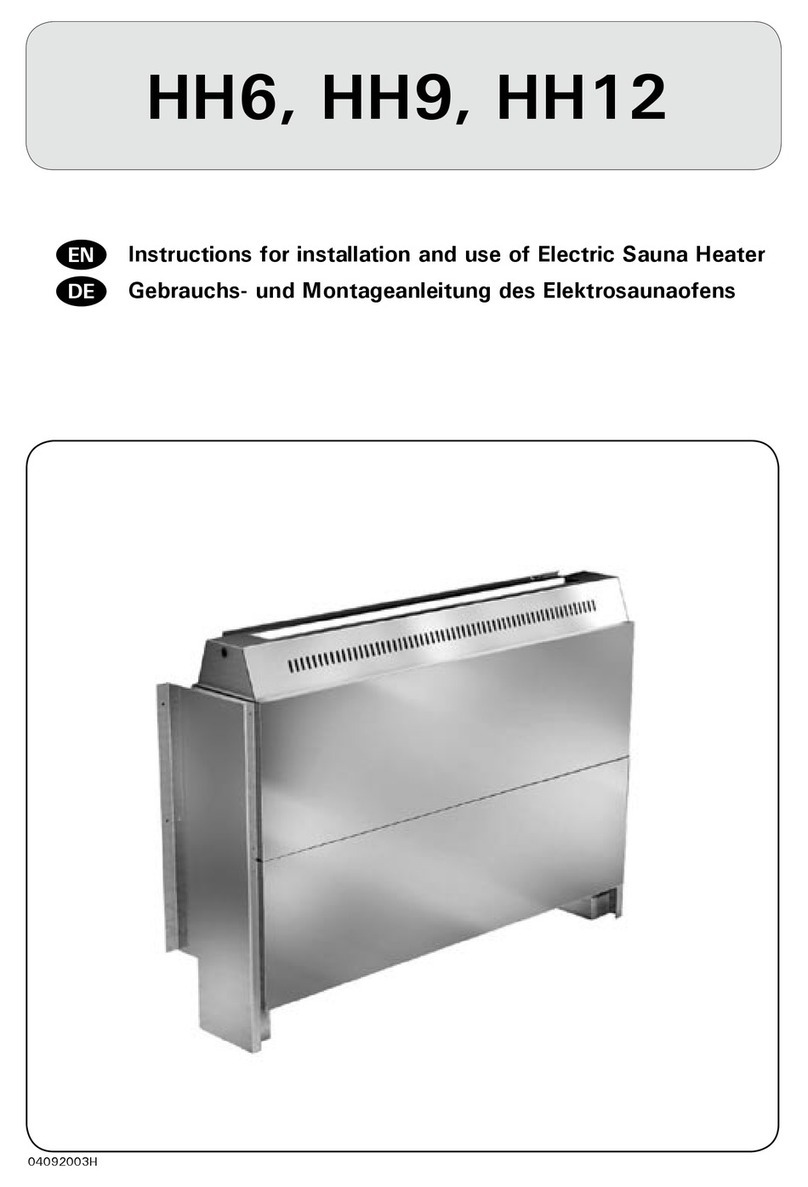
Harvia
Harvia HH6 Instructions for installation and use
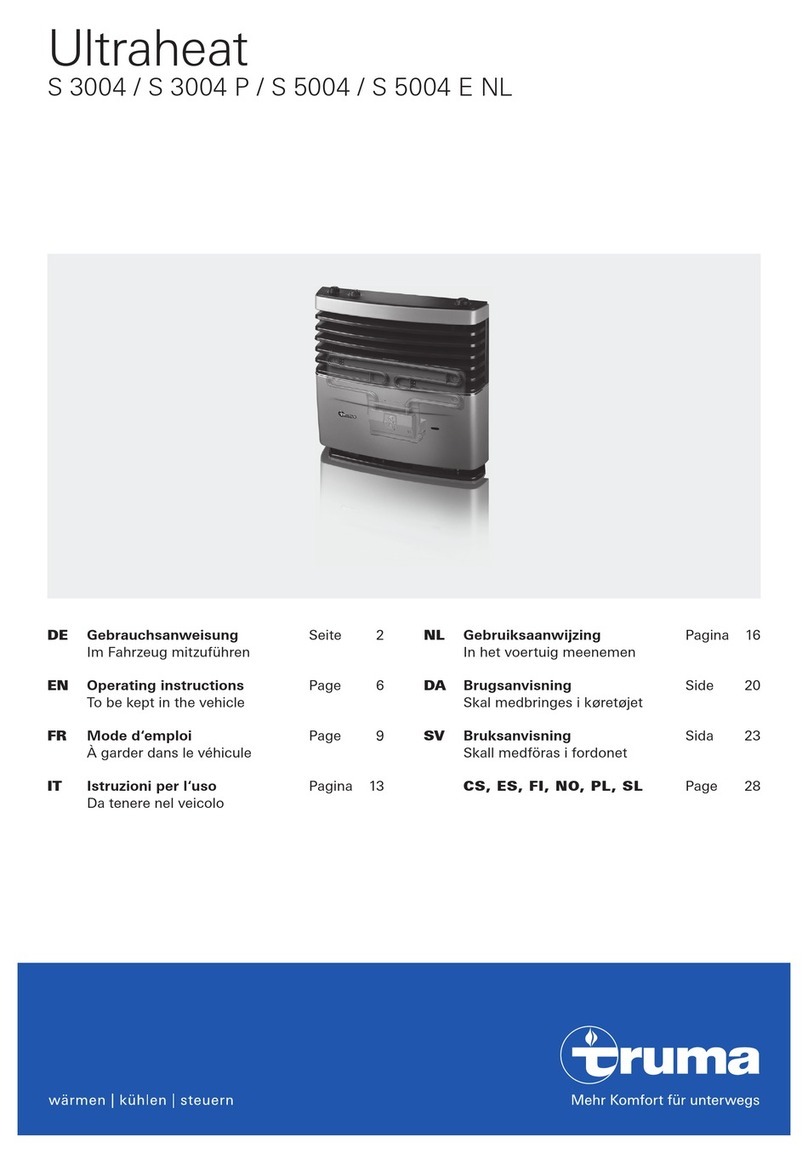
Truma
Truma Ultraheat S 3004 P operating instructions

Creda
Creda TPRIII 500MT Installation and operating instructions
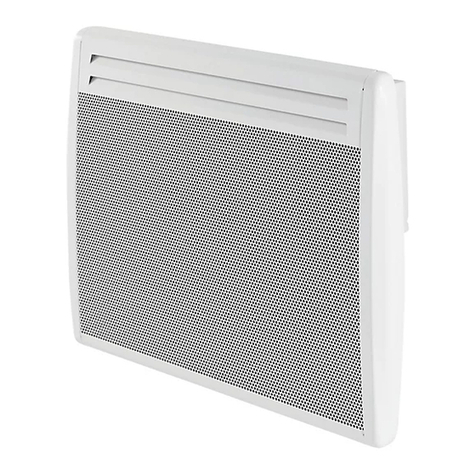
Kingfisher
Kingfisher NE15EPC manual

Comfort Glow
Comfort Glow CEH154 Homeowner's manual
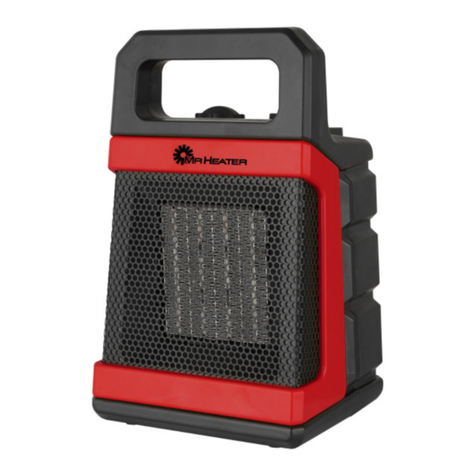
MrHeater
MrHeater MHE150FAT Operating instructions and owner's manual
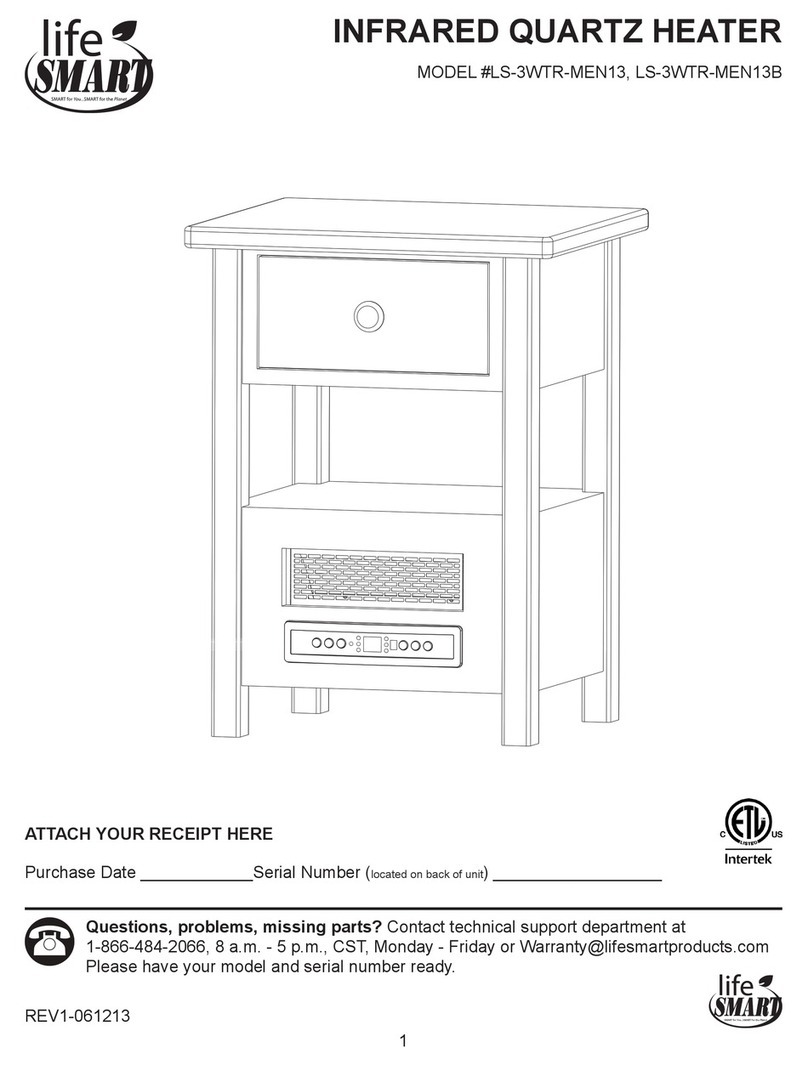
Life Smart
Life Smart LS-3WTR-MEN13 user manual
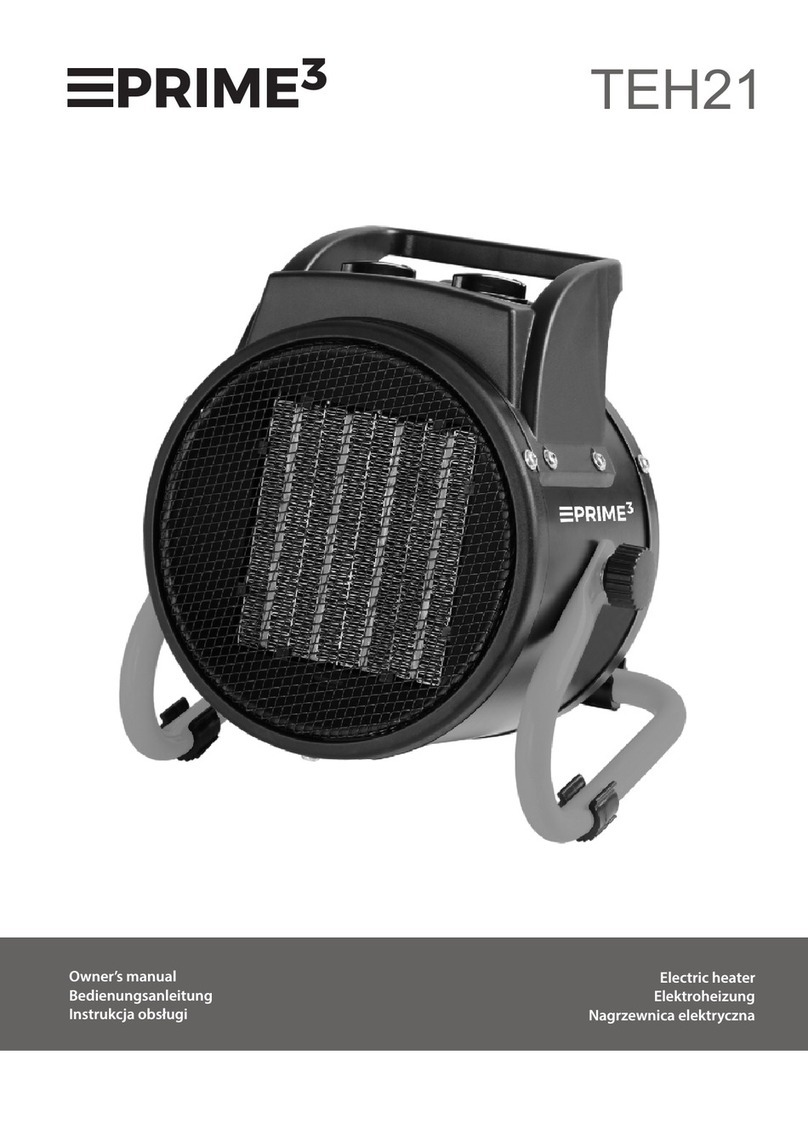
prime3
prime3 TEH21 user manual

Optimus
Optimus H-4439 Instruction manual and owner's guide
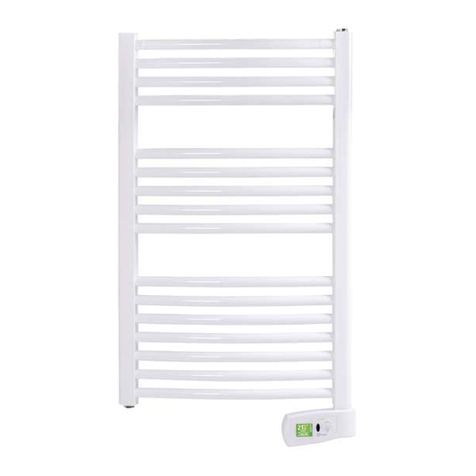
Rointe
Rointe ecodesign SYGMA Installation and user manual

Gude
Gude GH 15 EV Translation of original operating instructions

